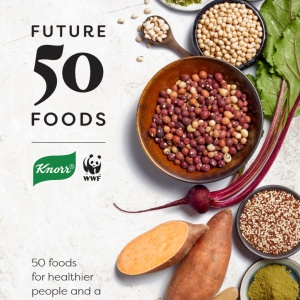Food categories covered by the report are:
- Algae (including seaweed)
- Beans and pulses (such as broad beans, soy beans and Bambara groundnuts)
- Cacti (nopales, also known as the prickly pear)
- Cereals and grains (including amaranth, fonio, Khorasan wheat and teff)
- Fruit vegetables” (i.e. fruit commonly eaten as vegetables, including okra and orange tomatoes)
- Leafy greens (including beet greens, kale, moringa and pumpkin leaves)
- Mushrooms (including enoki and maitake)
- Nuts and seeds (including flax, hemp seeds, sesame and walnuts)
- Root vegetables (including black salsify and winter radish)
- Sprouts (including alfalfa and sprouted kidney beans)
- Tubers (including lotus root and jicama)
The report points out that demand for less common food types will increase the number of food species grown, making the food system more resilient.
Read the full report, Future 50 Foods: 50 foods for healthier people and a healthier planet, here (PDF link). See comment from Footprint here: Amaranth and moringa on the sustainability menu. See also the Foodsource chapter What is a healthy sustainable eating pattern?








Post a new comment »